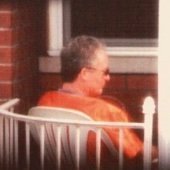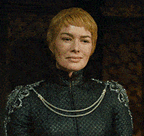All Activity
- Past hour
-
- 501 replies
-
- la cosa nostra
- chicago outfit
-
(and 1 more)
Tagged with:
-
- 501 replies
-
- 3
-

-
- la cosa nostra
- chicago outfit
-
(and 1 more)
Tagged with:
- Today
-
- 501 replies
-
- 3
-

-
- la cosa nostra
- chicago outfit
-
(and 1 more)
Tagged with:
-
- 141 replies
-
- character development
- ocg
-
(and 1 more)
Tagged with:
-
-
hissing sid joined the community
-
Good stuff
-
- 254 replies
-
- mexican cartel
- violent ocg
-
(and 2 more)
Tagged with:
-
lyric0m joined the community
-
Hola Toros Securidad @Chicken Bargain
- 254 replies
-
- 1
-

-
- mexican cartel
- violent ocg
-
(and 2 more)
Tagged with:
-
Discussion on Rogue Lab's first "Freestyle Rap Battle" event 🧪
- 12 replies
-
- business
- entertainment
-
(and 1 more)
Tagged with:
-
In Japan, certain families upheld traditions centered on martial discipline, ritual loyalty, and secrecy—values woven into local clan ceremonies and esoteric Shintō rites. Dragon symbols played a key role in coastal rituals and rain-making ceremonies, representing ancestral strength, purity, and power. These customs were passed down through rural communities, carried later into cities and abroad. By 1901, the Gen’yōsha (“Black Ocean Society”) had emerged, founded by former samurai and traditionalists led by Mitsuru Tōyama. Shortly after, Uchida Ryōhei created the Kokuryūkai (“Black Dragon Society”). These groups were known for their disciplined training, coded loyalty, and secretive alliances—an underground legacy of ritual and discipline. During WWII, Japanese Americans were imprisoned at camps like Manzanar. Within the camp, youth groups united into what became known as the Manzanar Kuroryūkai ("Manzanar Black Dragons"). Though their early acts were petty—raiding rations, harassing others—they fostered a strong internal code and solidarity. Following internment, some of these groups formed street-level crews in California, carrying forward the code of loyalty and solidarity forged in the camps. In San Fierro, descendants of these men organized into crews rooted in shared history and survival ethos. In early 20th‑century Japan, a family tradition grounded in secrecy, discipline, and loyalty took root—values quietly carried across the Pacific over generations. Some left San Fierro for Los Santos, joining growing enclaves in neighborhoods like Little Tokyo. Yumiko Nakamura grew up in Little Tokyo, Los Santos—a neighborhood that was mostly quiet but always watching. She spent time around shops, back offices, and parking lots where deals were made without needing words. Her world wasn’t violent, but it taught her how people moved—what they wanted, what they hid, what they’d trade. She learned to listen more than talk, and to keep things to herself. That’s how she got here. This photo surfaced in an archive labeled 'LS Historical Society: 1942–49'. Depicted is a weathered-era building with a bold dragon mural above the doorway. The mural’s artist remains unknown, and it’s absent from city planning diagrams or county records. Given the dragon’s scale and the unique border, some speculate it was painted to mark a gathering place for second-generation Japanese-Americans—a cultural landmark long since forgotten. This thread will follow the character development of Yumiko Nakamura.
















(1).thumb.gif.f5dd8f4fd8d4a1f98aba08a78f37e0d6.gif)
